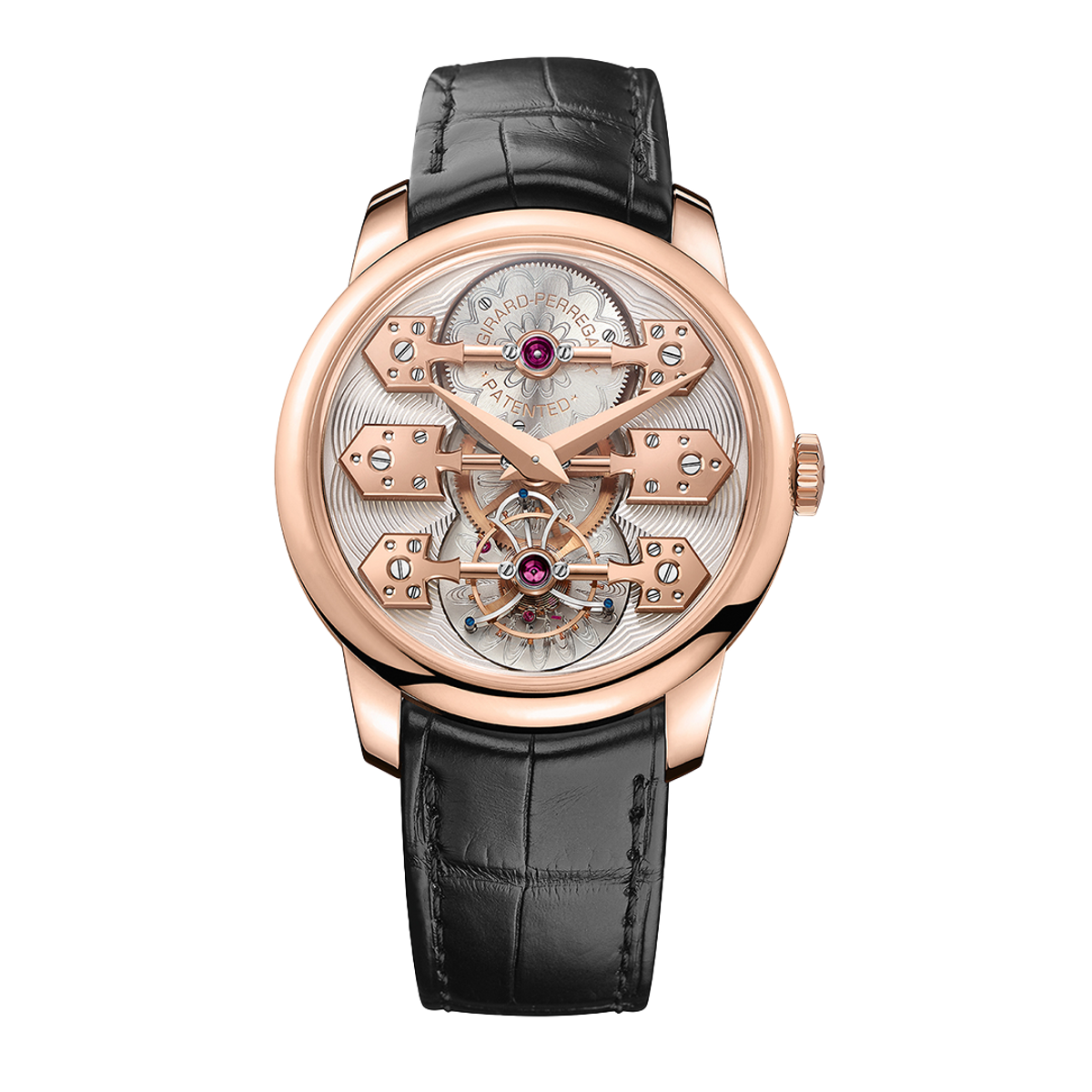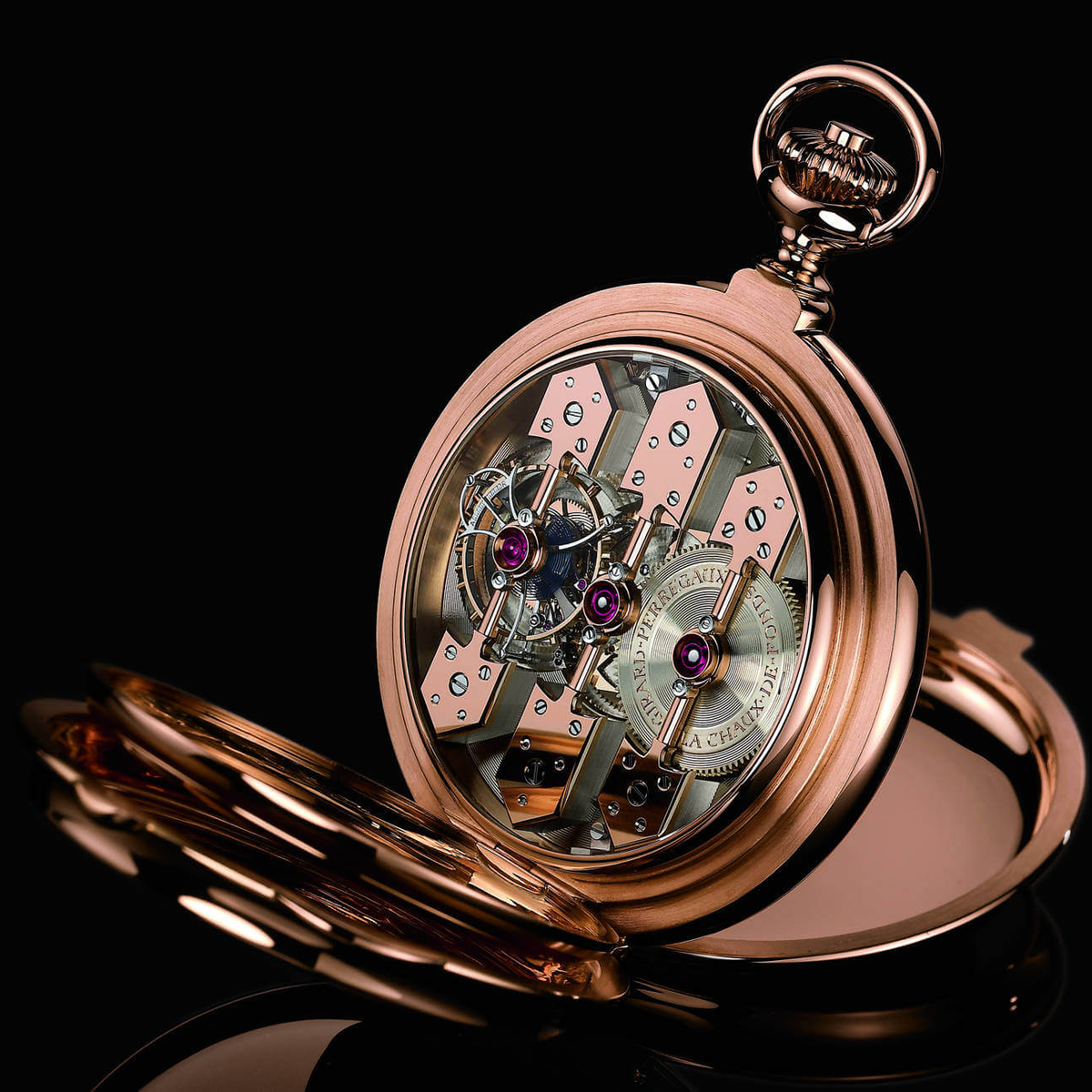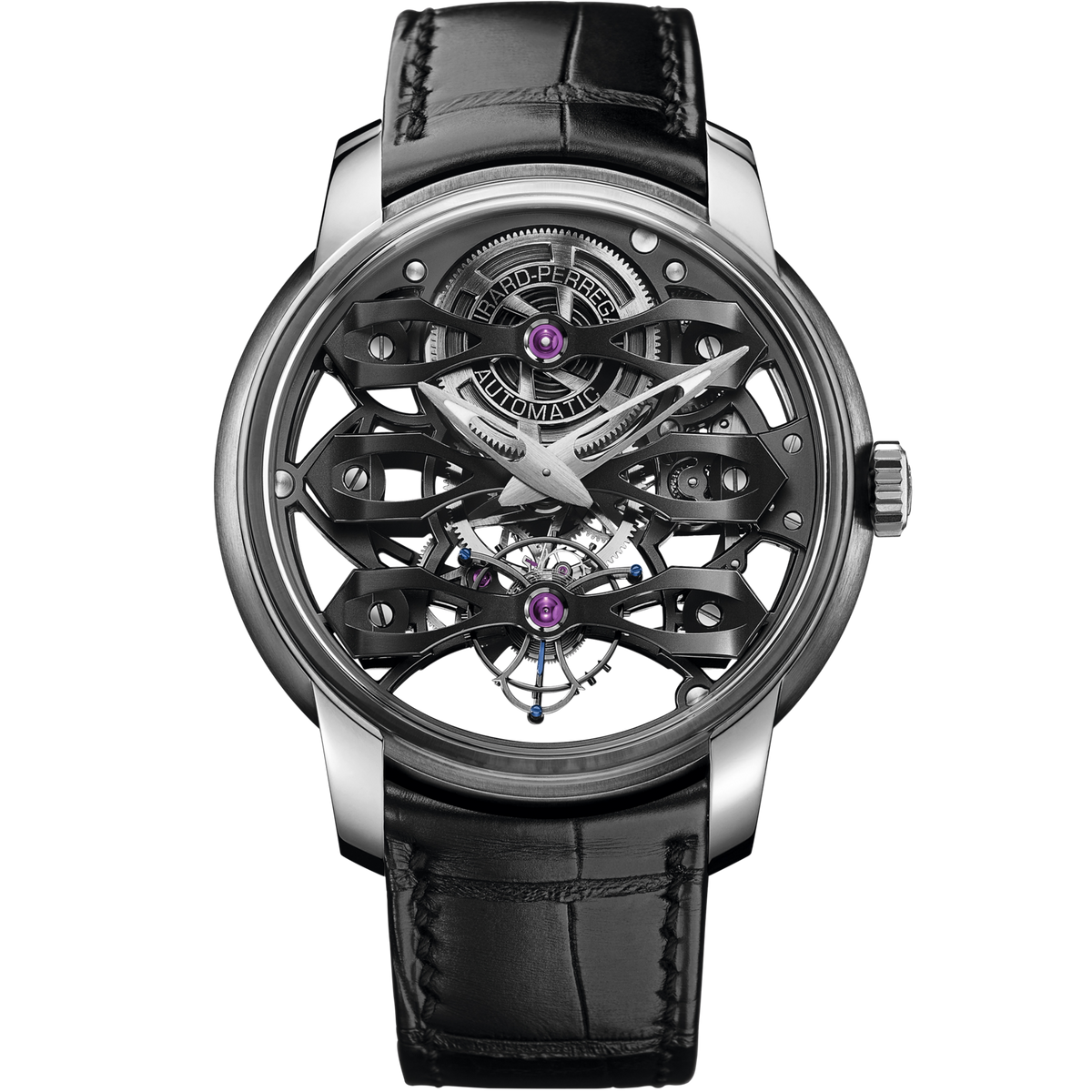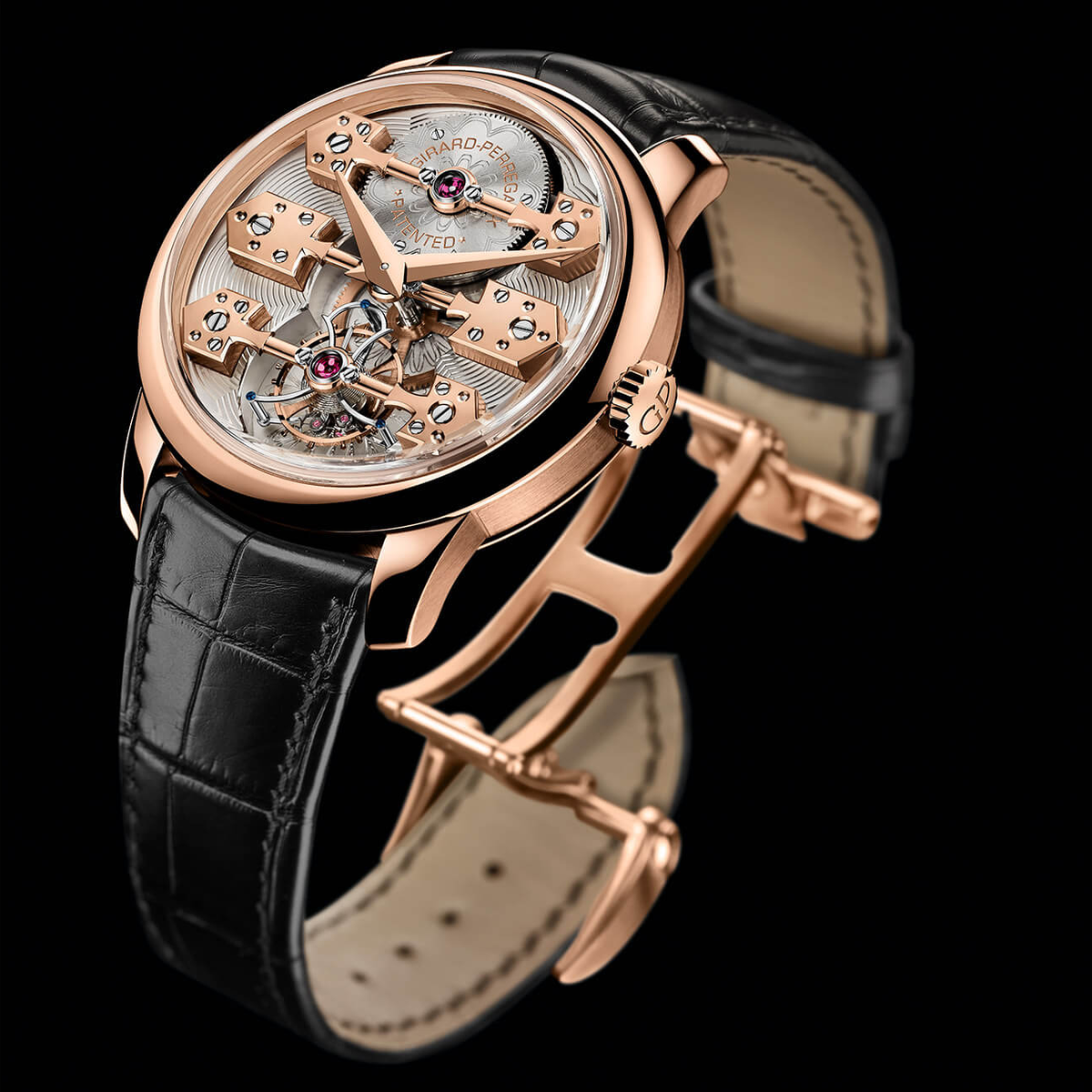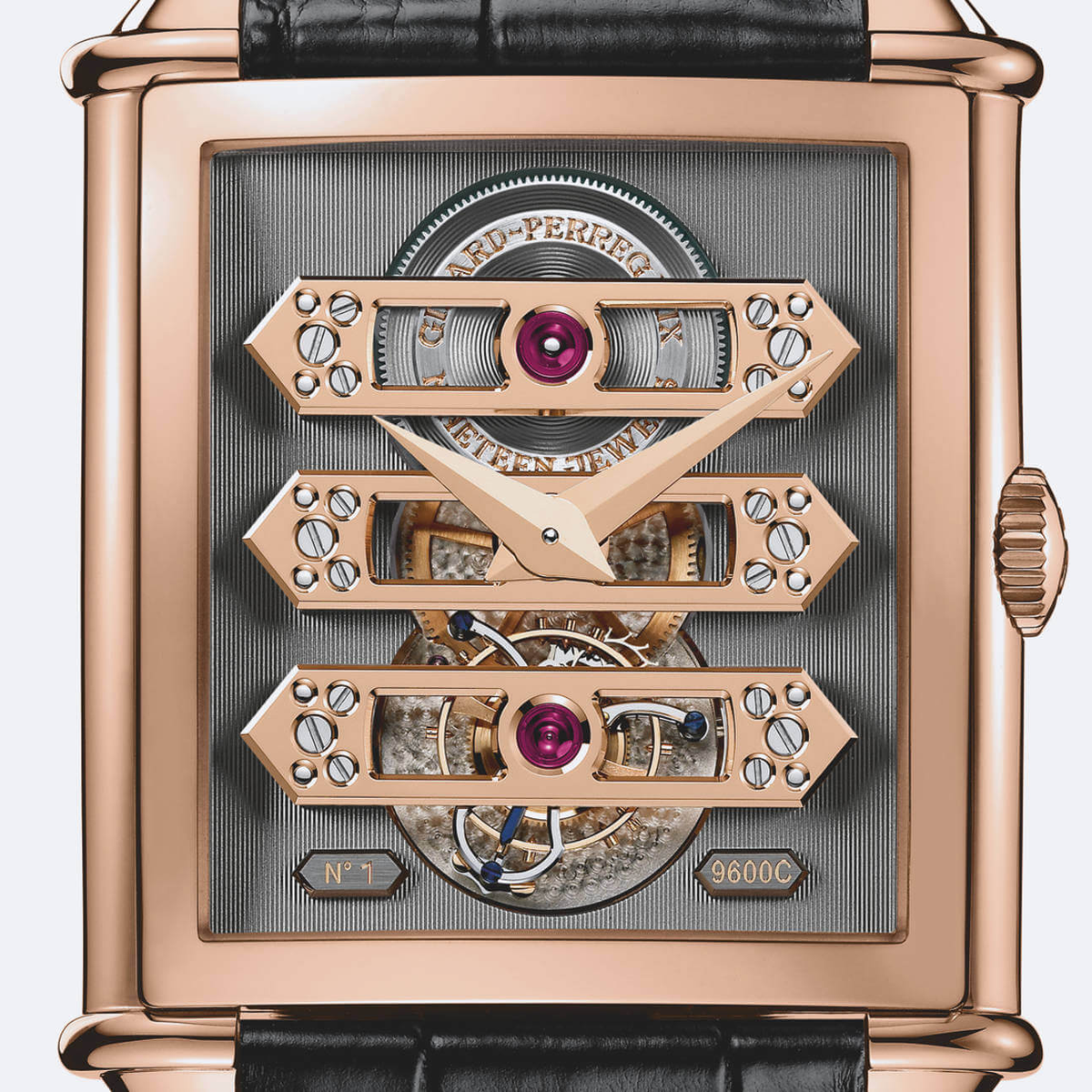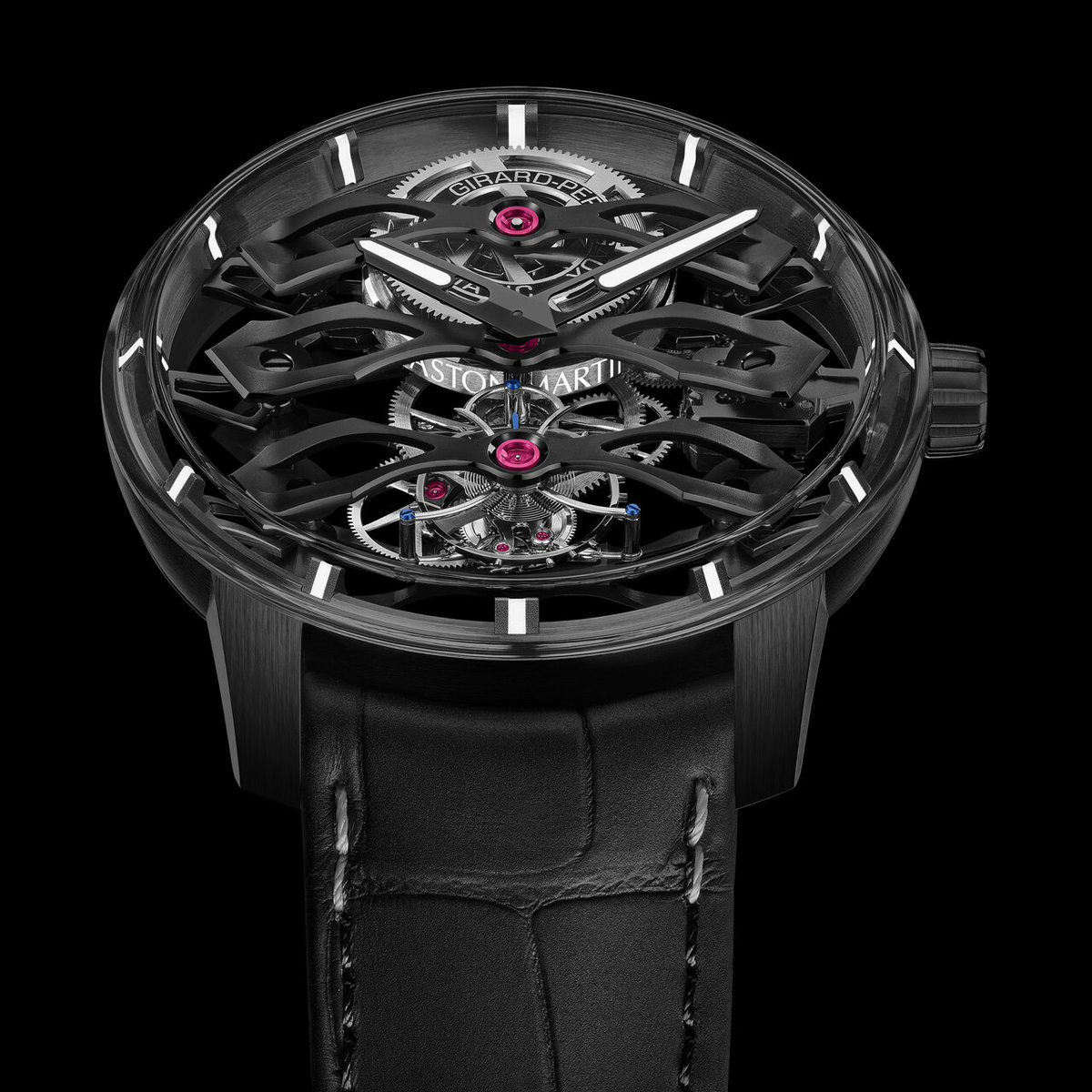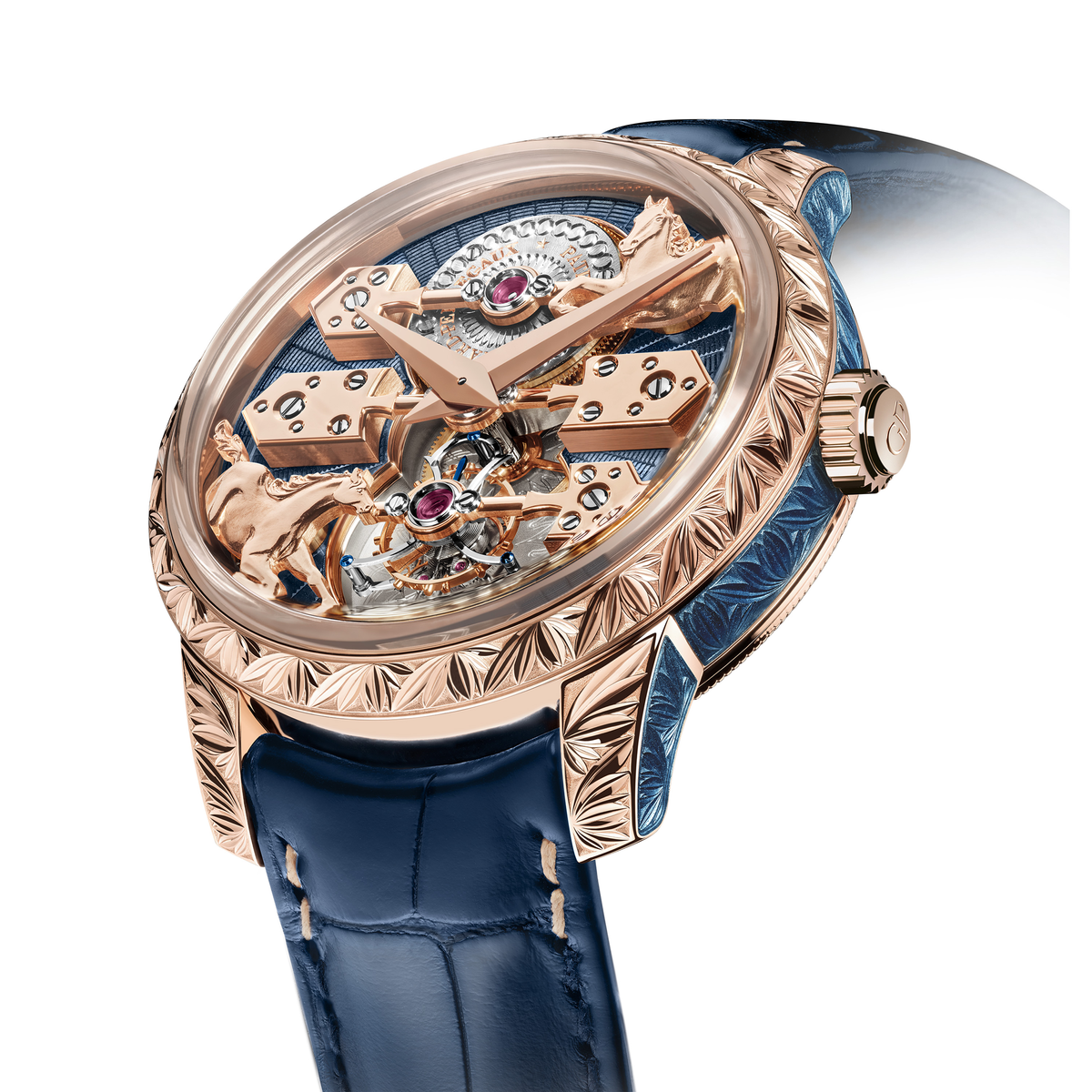The Tourbillon with Three Gold Bridges, patented in 1884, won a gold medal at the Paris Universal Exhibition in 1889.
Launch Year
1860s
Functions
hours, minutes, tourbillon
Movement
mechanical manual-winding
Distinctive features
complication watch with tourbillon featuring a particularly sophisticated aesthetic
Dating back to the 1860s, Girard-Perregaux's emblematic tourbillon is the result of very personal research carried out by Constant Girard who, rather than conform to the classic tourbillons of the day, resolved to apply his aesthetic research to the entire calibre. The watchmaker from La Chaux-de-Fonds thus aligned the barrel, the gear train and the tourbillon under parallel arrow-tipped bridges. The result was surprisingly elegant and with pleasing symmetry. In early creations, the bridges took the form of relatively simple metal bars. They were subsequently made from solid gold and infused with a lighter touch by carving away the centre to enable a clear view of the inner workings. As for the tourbillon, it featured a lyre-shaped carriage, which itself became emblematic of the brand. The Tourbillon with Three Gold Bridges was patented in 1884 and its most famous model won a gold medal at the Paris Universal Exhibition in 1889. Housed in a finely engraved pink gold pocket watch case, it was named La Esmeralda – after the retailer's Paris and Mexico City boutiques – and is said to have belonged to General Porfirio Díaz, President of Mexico.
Production of Constant Girard's masterpieces was interrupted in 1911, a few years after the watchmaker's death, and only resumed 70 years later. This meant reviving historical techniques and relaunching the production of missing components. Since 2010, the Maison has been offering a new interpretation that it produces on request. Nestling inside the pink gold hunter-type case, the movement is protected by two covers: one finely engraved and the other left blank.
However, the greatest challenge was the miniaturisation required by the masterpiece’s transition to the wrist. In parallel with the technical evolution that has enabled the collection to be interpreted as manual-winding and self-winding models, Girard-Perregaux has striven to offer pleasing variety by adapting the aesthetics, in particular that of the bridges, to the shape and style of men’s or women’s wristwatches. Many variations have been introduced, usually in limited editions. In general, two types of bridges can be distinguished: the arrow shape of the historic La Esmeralda, which were most faithfully reproduced in the 2016 La Esmeralda, interpreted as a wristwatch for the brand’s 225th anniversary; and those of the original tourbillons, which reappeared with hollow centres in 2002, framed by the rectangular case of a 1945 Vintage. By introducing the Neo-Tourbillon with Three Bridges (not made of gold) in 2014, Girard-Perregaux paved the way for more disruptive yet recognisable designs. The Tourbillon with Three Flying Bridges – Aston Martin Edition introduced in 2021 is another example. The titanium bridges and lyre-shaped tourbillon carriage are on full show inside a sapphire case.
Key Characteristics
- The Tourbillon with Three Gold Bridges was, for many years, the Girard-Perregaux signature
- An iconic model that placed watchmaking techniques firmly in the service of design – something rarely encountered in the 19th century.
